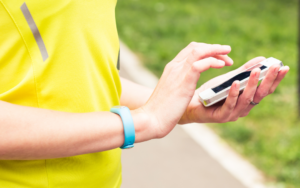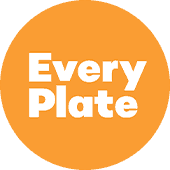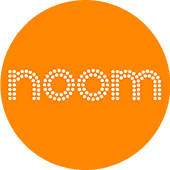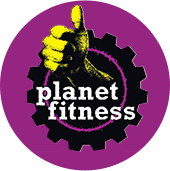Empowering Your Health Journey
What is a Wearable?
You’ve probably seen wearables around, or perhaps you own one yourself. You might not be aware that they belong to a rapidly growing category known as “wearables.” A wearable device is worn on your body and can continuously track your health and fitness. These devices often include heart rate monitoring, activity tracking, sleep monitoring, and sometimes even more advanced health metrics like blood pressure or oxygen saturation levels. They are commonly used to help maintain and improve overall health and fitness goals by providing real-time feedback and data insights.
Wearing a Device
How you wear your wearable device might depend on preference and brand, while others can be more specific to it’s function. Here are some of the ways you might find someone sporting their wearable:

- Wrist (a bracelet or cuff)
- Finger (a ring
- Upper arm
- Around the neck
- Clipped to clothing
Who Wears Them?
 It is common for individuals who already lead a very healthy lifestyle to own a wearable. This group typically follows a consistent exercise routine and prioritizes their health and well-being. They can establish fitness goals and then keep track of their activity levels while they work out. They can test their limits and optimize their health to its fullest potential. The better understanding you have about your health through data and patterns, the more effectively you can take action to support it. Athletes, fitness enthusiasts, and health-conscious people fall into this group.
It is common for individuals who already lead a very healthy lifestyle to own a wearable. This group typically follows a consistent exercise routine and prioritizes their health and well-being. They can establish fitness goals and then keep track of their activity levels while they work out. They can test their limits and optimize their health to its fullest potential. The better understanding you have about your health through data and patterns, the more effectively you can take action to support it. Athletes, fitness enthusiasts, and health-conscious people fall into this group.
The next group consists of Individuals embarking on their own healthcare journey for personal reasons. A wearable can help determine a starting point, track their progress, and keep them motivated. It also acts as a physical reminder and holds them accountable to make healthier choices. Data can often be shared with a trainer or a health coach. While the wearable won’t automatically make its wearer healthier, it can spark behavior changes that improve health and wellness.
The final group uses wearables for medical reasons. People with health concerns are often found sporting a wearable per their doctor’s recommendation. Doctors can better monitor their patients using the technology in many wearables known as biosensors. They can collect data about their health around the clock. Biosensors can detect specific substances such as glucose, cholesterol, drugs, or health data, such as heart rate, blood pressure, blood oxygen, sleep patterns, or breathing rate.
Some people who use wearables for medical reasons might wear them briefly until enough data has been collected. Others wear them for more extended periods to help keep their medical condition under control or even as a reminder to take their medication.
Advancements in Wearables
It’s remarkable just how far wearables have come. In the early 2000s, ‘wearable technology’ simply referred to activity or step trackers. Today, the market has expanded beyond what anyone might imagine. The devices available today are quite groundbreaking, especially for those in the health and wellness field. Some of the more advanced wearables don’t just track and monitor. There are some that can determine the causes or triggers of stress. While others can actually diagnose and treat diseases. Physicians and health coaches can monitor a patient around the clock without needing an in-person visit. Because of this, wearables are expected to lower the cost of healthcare for many individuals in the near future.
At Knew Health, our community is dedicated to removing barriers and providing a proactive approach to healthcare. Supporting members’ access to health wearables is a prime example of the steps we take to ensure true preventive care. With the rising cost of healthcare, these advancements are not only saving lives, but they’re also saving money.
Disadvantages of Wearables
However, wearable technology is still very new and is developing every day. Significant research has yet to be done on their use. Like any emerging technology, there are always hurdles to overcome. Some of those challenges include:
Malfunctions – Unfortunately, technology is bound to malfunction. Wearables are no different.
Price – Many of the advanced wearables can come with a high price tag. Some also require an app with a monthly fee to be used.
Skin Irritation – Some users have reported that the wearables are uncomfortable and, in some instances, have caused skin irritation.
Sleep disruption – Wearing these devices could also prevent a good night’s sleep for some.
Privacy and Security – There has been recent concern from users that the companies who create these wearables have been using the data collected for their own research without the consent of the users.
With their growing popularity, we can only hope that the kind of research needed will be accomplished soon to give people a better understanding and make an even bigger impact on their health.
How to Get Yourself a Wearable
You’ve probably noticed wearable gadgets everywhere lately. Now, it’s your turn to consider getting one—not just because they’re trendy, but because they can significantly enhance your health journey. At Knew Health, we’re dedicated to your well-being, especially through the use of wearables.
As part of our monthly membership, we provide preventive and wellness services to make it easy and cost-effective for you and your entire family to focus on your health goals. These services include:

- Personalized health coaching sessions
- Annual wellness visits (with the provider of your choice)
- Telemedicine
- Yearly wellness allowance (great to use for your wearable technology)
- Access to the FitOn digital platform
- Discounts on supplements and labs
- And so much more
If you’re curious to learn how Knew Health can align with your health goals, visit our website or schedule a call with our Care Team today.
Sources
Modaragamage, Amanda Jane RPN. “Top Wearable Medical Devices Used in Healthcare.” Healthnews, 16 Jan. 2024, healthnews.com/family-health/healthy-living/wearable-medical-devices-used-in-healthcare/.
Palatnik, Martin. “Wearable Technology in Healthcare: A Booming Market.” Qubika, 23 Jan. 2024, qubika.com/blog/wearable-technology-in-healthcare/.
Sanchez, Eva. “Health Wearables.” Western Oregon University, wou.edu/chemistry/chemistry-degree/student-activities-2/chemistry-corner/advancing-the-frontiers-of-medicine/health-wearables/.










































